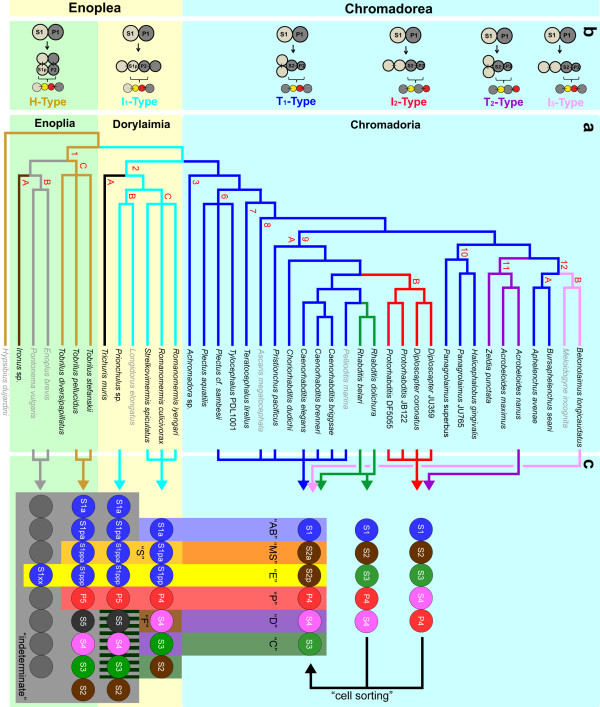Figure 1.
Phylogeny and development. a. Phylogenetic tree of nematodes (after [5]; clade 9 after [4]) with species whose embryogenesis is compared here. Different colors of lineage branches indicate distinct early cleavage patterns as indicated in Figure 1b. Individual clades (1 to 12) are marked with red numbers. Clades 4 and 5 are not included due to fragmentary data (see results). Based on distinct developmental characters described in the text some clades are further subdivided (A, B, C). Data of species written in grey have been extracted from the literature. References are given in the text. b. Six early cleavage types. Color of lettering corresponds to lineage branches where this pattern is found. Division of 2 to 4 cells (top) and origin and relative position of alimentary tract (Enoplea) or gut (Chromadorea) precursor (yellow) and germline cell P3 (red) generated with the next division are shown. c. Alignment of early blastomeres (colored circles) along the a-p axis. Colored columns indicate fate assignments ('AB' = AB-like and so on, for definition, see materials and methods). From clade 2C onward all early blastomeres can be assigned one of the six basic fates, however the position in the sequence of cells varies between species. Striated area indicates that in Prionchulus S3-S5 form largely bilaterally symmetric clones (for further description, see text). In some Chromadorea the initial order of founder cells is different to that in C. elegans due to the absence of PR in the germline. After cellular rearrangements ('cell sorting') they all merge into a single, standard pattern prior to the onset of gastrulation. PR, polarity reversal in the germline.

